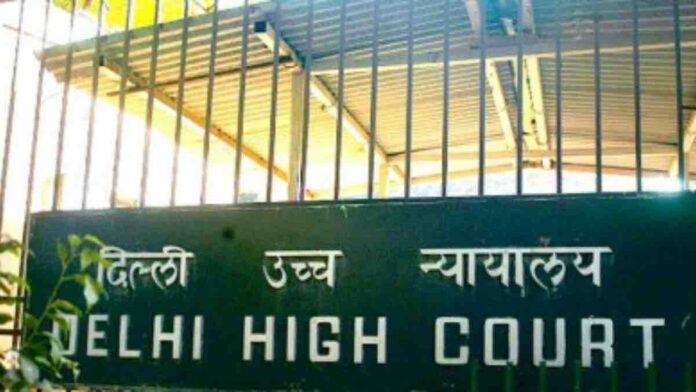The Delhi High Court Friday dismissed a petition by Siddhartha Extension Pocket C Residents Welfare Association and Senior Citizens Welfare Forum against the construction of a portion of the Delhi-Meerut Regional Rapid Transport System (RRTS) through the locality.
A bench headed by Chief Justice Satish Chandra Sharma said public interest was at the forefront of this project which was designed as a semi high-speed rail corridor to establish connectivity between Delhi, Ghaziabad, and Meerut.
The bench, also comprising Justice Sanjeev Narula, said between individual property rights and overarching public interest, the scale tipped in favour of the benefit of the larger community.
The petitioners, in their public interest litigation, argued that the authorities arbitrarily abandoned the initial route plan for the project, which did not include Siddhartha Extension, and unilaterally altered it to include a viaduct that would pass directly through Siddhartha Extension, connecting the stabling yard at Jangpura.
It was argued that the residents have a protected legal right to their properties and National Capital Region Transport Corporation (NCRTC) should be precluded from encroaching upon these rights.
The court observed the NCRTC was not a novice in the field and the chosen alignment was not an arbitrary decision but one steeped in technical viability, cost-efficiency, and broader societal gains.
“The potential alignment options for the concerned viaduct propose the following: (a) bypassing Pocket C of Siddhartha Extension, or (b) running though Pocket C of Siddhartha Extension, impacting 24 flats, or (c) cutting through Siddharth Extension colony and affecting 8 flats,” recorded the court.
“As per their (experts) evaluation, Option 3 not only minimizes the number of flats affected, but also presents a cost-effective approach when compared to Options 1 and 2,” the court stated.
It added that the positioning of pillars in the chosen option was carefully planned to ensure non-interference with roadways or other easement rights like parking and free spaces and also minimized the impact on local residents by affecting the least number of flats.
It also offers the most technically feasible and economically prudent route, the court said.
“Public interest stands at the forefront of this project, given its significant benefits such as reducing air pollution, alleviating traffic congestion, and offering a more efficient transportation system. Additionally, the project promises substantial environmental benefits…including significant reductions in annual emission rates of particulate matter, nitrogen oxide, hydrocarbons, and carbon monoxide,” the court observed.
The petitioners also contended that there would be an adverse impact on the quality of life and safety of the residents because of the project on account of noise and air pollution, placement of hazardous infrastructure and heavy machinery in a residential zone.
The court noted that the NCRTC has strategically planned allocation of resources to expedite the completion of the project as swiftly as possible and there is a proactive strategy to safeguard the general public from construction-related hazards.
Also Read
The court observed that before the initiation of construction activities, proper road diversions would be established and managed by trained and experienced traffic marshals and steps will be taken to reduce the likelihood of congestion and accidents.
After completion of the construction, NCRTC would restore the site to its original state, supplemented by modern amenities for the residents, it added.
“These measures demonstrate NCRTC’s conscientious approach to balancing the imperatives of public infrastructure development with the everyday lives and concerns of affected resident,” the court said.
“(The petition is) Dismissed, along with pending applications,” it ordered.




